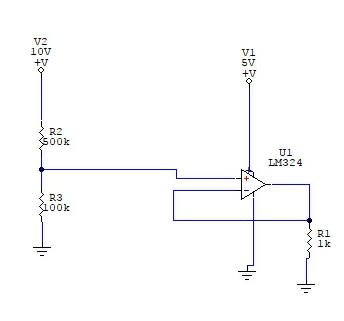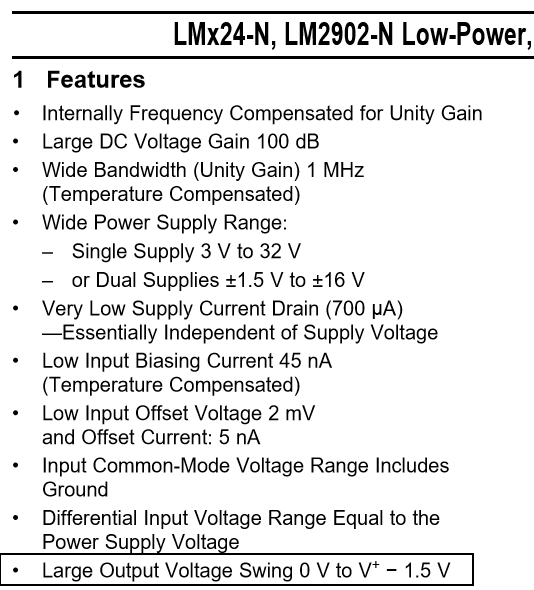I am trying to understand which parameter of an opamp is effecting the performance of a simple buffer circuit.
I have attached circuit.
When using a TI lmc660 opamp my output is not the expected ~1.7 volts, but about 4 volts (close to upper limit for 660 opamp). If I use a Linear LTC2052 precision opamp, I get the expected 1.7 volt output.
The 2052 has much better specs than the 660, but I am trying to understand what spec/specs are not allowing the 660 to work. I don't think it is the offset, CMRR(maybe), or drift characteristics. I know it has to do with rejecting the 10Volt supply across the voltage divider, but I am not sure which spec is related to this. I wouldn't think the CMRR is playing a role since the voltage fed from the divider is lower then the supply voltage of the opamp?
Thanks in advance for helping me understand.
I have attached circuit.
When using a TI lmc660 opamp my output is not the expected ~1.7 volts, but about 4 volts (close to upper limit for 660 opamp). If I use a Linear LTC2052 precision opamp, I get the expected 1.7 volt output.
The 2052 has much better specs than the 660, but I am trying to understand what spec/specs are not allowing the 660 to work. I don't think it is the offset, CMRR(maybe), or drift characteristics. I know it has to do with rejecting the 10Volt supply across the voltage divider, but I am not sure which spec is related to this. I wouldn't think the CMRR is playing a role since the voltage fed from the divider is lower then the supply voltage of the opamp?
Thanks in advance for helping me understand.



![[tongue] [tongue] [tongue]](/data/assets/smilies/tongue.gif)
